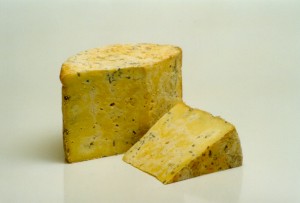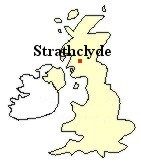
|
|
||||||
Lanark Blue is described as the first British blue sheep's cheese for centuries. It cannot be claimed to be the 'first ever' blue since the medieval French monks of the great Yorkshire abbeys cannot have been ignorant of Roquefort and how to make it; that kind of knowledge crossed boundaries easily in the Middle Ages, carried by pilgrims, friars, peddlers and itinerant sheep-shearers. Humphrey Errington, of a Scottish family, read history at Cambridge and then worked for a shipping company in the Far East. In 1982 he returned and moved to a farm called Walston Brahead at Ogcastle near Carnwath, where he began to seriously think about cheese making. Humphrey obtained the help of Janet Galloway, a teacher of cheese-making at the West of Scotland Agricultural College in Ayr. She had spent time studying the making of Roquefort in France and was able to pass on her knowledge. Humphrey also employed Mary Lang, who was trained by Janet Galloway, and cheese maker Ian McLheary. Eventually, Humphrey was able to turn the idea into a reality and the first Lanark Blues were produced in early 1985 and sold in Edinburgh. By July 1986, the cheese was on sale in England. Lanark Blue is hand-made in a farm-house creamery from unpasteurised ewes' milk. The Peninillium roquefortii mould which blues the cheese is introduced into the milk at the start of the cheese making process. Rennet suitable for vegetarians is used. Once the curd has been ladled into forms and has settled into shape , the cheeses are dipped twice in brine, each time being put into clean forms. The cheeses are never pressed. After about a month they are wrapped in foil to inhibit further growth of surface mould, and matured in a cool and damp atmosphere for two months more. They are turned three times a week. The final stage is to scrape them, and then re- wrap them for sale. Everything is done by hand. The foil used to wrap Lanark Blue is overprinted with a distinctive picture of a Lanark milkmaid with a cheese on her lap and a ewe by her side. This picture was created by the artist Tom Errington, Humphrey's brother, who adapted an oil painting by Robert Herdman: it depicts a girl stringing rowan berries watched by her sister. The sheep graze on hillsides rich in herbs and clover a thousand feet above sea level, overlooking the valley of the upper Clyde. Humphrey has 400 sheep and the problem of year-round production, a problem with sheep's milk as with goat's, was solved by having two flocks, one lambing in March, which is usual, the other in October. The cheese varies enormously throughout the year which is said to be due to the seasonal changes in the animals diet; the cheese is creamy and medium flavoured in the spring and becomes very full flavoured and wild in the winter. The paste is a mottled ivory white with blue-green mould. The cheeses are shaped like deep half moons, 14cm in radius, 10cm high, weigh one and a half kilograms, and have a fat content of 45%. If you find Lanark blue too salty then take a tip from Roquefort and mash it on your plate with unsalted butter. Lanark Blue can be used in cooking, especially sauces. Lanark Blue is best accompanied by a full bodied red wine. Click here or press your 'Back' button to return |
|
||||||
| All articles © www.teddingtoncheese.co.uk | |||||||
